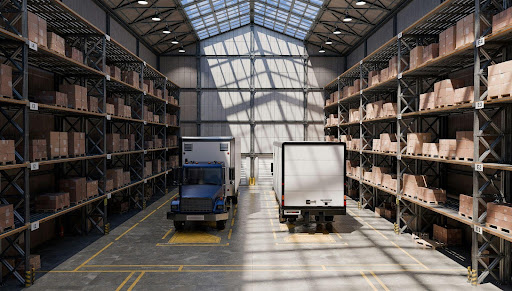There’s a thrilling clarity that comes when you first conceive a bold new idea—a business, a studio, an app, even a boutique farm. Everything feels within reach until you start mapping out the costs. That’s when reality hits. Some dreamers, in pursuit of momentum, even consider a second mortgage just to get their vision off the ground. For many, it’s a leap of faith. For others, it’s the only path forward.
Ambition is never free. From unexpected legal fees to branding re-dos, launching a major project is often twice as expensive and three times as time-consuming as we first imagine. Whether you’re a solo founder, creative entrepreneur, or passionate hobbyist scaling a side hustle, understanding the hidden costs behind “big ideas” can protect your energy, finances, and sanity.
The Illusion of Lean Starts
The startup world has romanticized the “garage-born” company: two co-founders, a coffee machine, and some seed capital. But the vast majority of ventures require more than minimalism. While cloud software and remote workspaces reduce some overhead, other unavoidable costs still sneak in.
These often include:
- Licensing and legal compliance: Government filings, industry certifications, and legal consultations.
- Equipment and materials: Even digital creators need gear. Musicians, artists, coders—everyone invests in tools.
- Digital infrastructure: Hosting, cybersecurity, and email platforms add up.
What often drains budgets fastest, though, is trial and error. Early missteps in choosing vendors or building an ineffective website can cost thousands.
Branding Isn’t Cheap (or Optional)
You may think you’re “just building a product,” but every idea has a brand. Whether intentional or not, your visuals, tone, and messaging signal who you are. Investing in professional branding early may seem extravagant, but poorly executed DIY branding can be even more expensive down the line.
Branding costs include:
- Logo and design identity
- Brand story or copywriting
- Website and packaging design
- Naming consultations
Many entrepreneurs spend $3,000–$10,000 on branding alone in their first year. Others bootstrap their identity only to rebrand 18 months later. Better to get it right from the start.
Hiring Help: The Unseen Expense of Time
The hours you spend learning something from scratch—coding, bookkeeping, graphic design—are hours you’re not spending building your core vision. Hiring experts saves time, but good people cost money.
Key freelance or agency costs include:
- Copywriters ($50–$150/hr)
- Developers ($75–$250/hr)
- Accountants/legal advisors ($100–$300/hr)
The solution isn’t to do everything yourself. It’s to budget realistically for tasks outside your strengths. Delegating isn’t just a scaling tool; it’s a survival skill.
The Emotional Toll of Burnout
Financial strain is just one side of launching something ambitious. There’s also the emotional tax. Isolation, imposter syndrome, exhaustion—these costs can be harder to measure and even harder to fix once entrenched.
Overworking without rest or community support leads to burnout, which can derail even the most promising ventures. Mental clarity and resilience should be part of your capital plan. Therapy, coaching, or peer masterminds are not luxuries—they’re investments.
Scaling Brings Its Own Surprises
Once your idea starts to gain traction, the stakes rise. You’ll need to:
- Upgrade your website hosting to handle traffic.
- Hire customer support or scale operations.
- Invest in advertising and audience growth.
Many founders are caught off-guard when scaling reveals new gaps: lack of automation, inefficient systems, or unscalable fulfillment methods. Rapid growth magnifies weak foundations.
A 2023 report by the U.S. Small Business Administration notes that 82% of failed businesses cite cash flow issues as a primary cause—often because scaling costs were underestimated.
Marketing Beyond Launch Day
Many people budget for a launch, but few plan for post-launch marketing. Even if your product is excellent, people won’t find it without continuous promotion.
Expect to spend on:
- Social media ads
- Email marketing tools
- SEO/content strategy
- Influencer or affiliate campaigns
Marketing is not a one-off activity. It’s an ongoing system that needs constant feeding, testing, and refining. This can be one of your largest recurring costs.
The Currency of Time
Time is your most limited resource. As your project scales, you’ll start feeling the pinch. You can either hire, automate, or burn out.
Automation tools like Zapier, Airtable, or HubSpot are lifesavers—but they come with subscription fees. So does your calendar app, your CRM platform, your scheduling tools. Every time you buy back time, you’re spending money. But without this exchange, time-starved founders end up stuck in low-leverage tasks.
How to Prepare for the Unpredictable
No plan survives first contact with the market. The best founders don’t just budget for what they know—they allocate capital for what they don’t know yet.
Create a contingency fund of at least 15–25% of your startup budget. This can absorb unexpected costs like currency fluctuations, vendor failures, or tech breakdowns.
Also, revisit your assumptions every 30–60 days. Market feedback will change your strategy. Agility beats perfection.
Alternative Financing: Bootstrapping Isn’t the Only Way
Not everyone has the cash to fund a big idea personally. Crowdfunding, angel investors, and business grants are growing in popularity. So are unconventional methods: borrowing against property, refinancing, or exploring a second mortgage. Platforms like ibank.tw have emerged to make such financial instruments more accessible for creative or high-potential projects.
These tools shouldn’t be entered lightly. But for many, they’re a lifeline that bridges the gap between idea and execution. The key is to pair financial creativity with strict discipline and long-term planning.
Building a Financial Launch Plan That Works
Here’s a rough structure for mapping out your startup budget:
- Core product/service build: 40%
- Marketing and branding: 25%
- Legal, compliance, and accounting: 10%
- Tools, hosting, and tech stack: 10%
- Contingency/emergency fund: 15%
Tailor these to your industry, but be honest about every line item. If you’re building an app, development may consume 60%. If you’re a coach, branding and marketing may take the lion’s share.
Lessons from the Trenches
Entrepreneurs who’ve been through the fire offer consistent advice:
- Start smaller than you want. Validate early, build later.
- You’ll need twice the money and three times the time. Budget accordingly.
- Say no to shiny tools. Buy what you need now, not what you think you’ll need at scale.
- Invest in brand clarity and operations early. Confused messaging or messy systems can cost thousands to fix later.
Remember: ambition is a powerful engine, but it needs a solid chassis.
Every big idea starts with excitement—but many end with regret when reality strikes harder than expected. The hidden costs of launching are not designed to stop you, but to shape your strategy.
Financial planning, mental resilience, realistic timelines, and a flexible growth mindset will take you farther than raw passion alone. If you’re ready to dream big, be ready to plan big too.
And if your bold vision involves stretching your resources—maybe even contemplating a second mortgage, ibank.tw—just make sure you’re betting on more than a dream. Bet on a plan.















